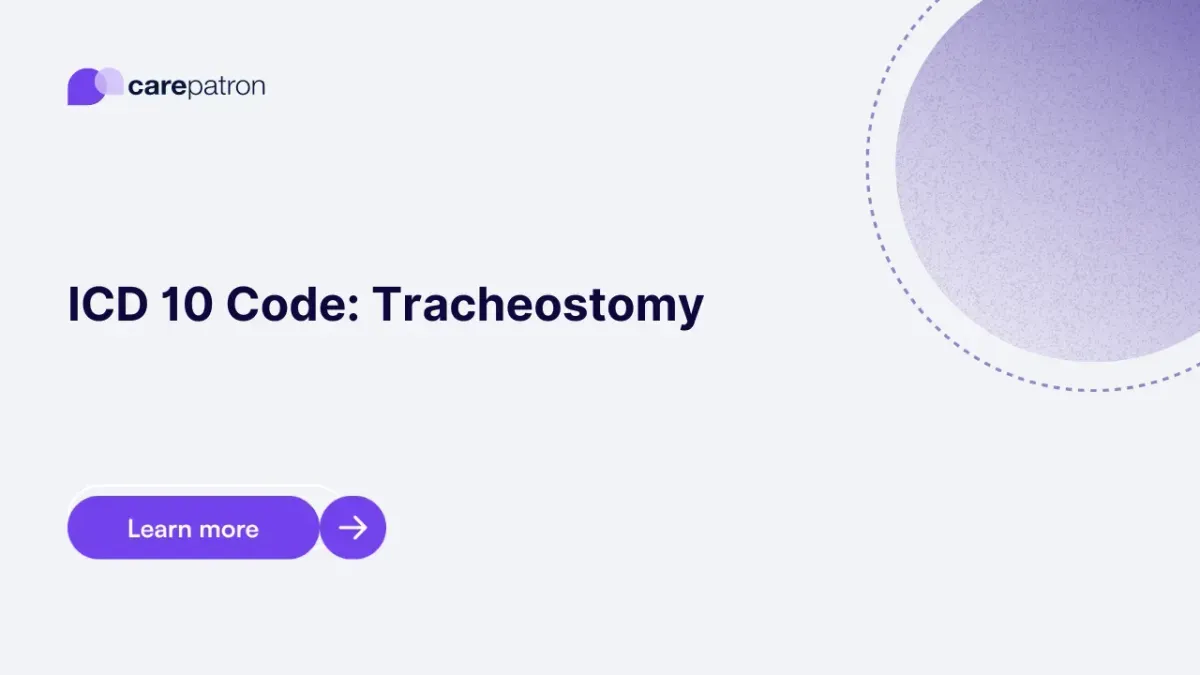
Tracheostomy ICD-10-CM Codes
Discover essential ICD-10 codes for Tracheostomy, ensuring accurate medical documentation and billing. Learn more now.
Use Code
Commonly asked questions
Use when documenting the presence of a tracheostomy tube or stoma in a patient's medical history.
Tracheostomy diagnoses are typically billable, ensuring proper reimbursement for related medical services.
Treatment varies based on complications; common interventions include antibiotics for infections, surgical removal for granulomas, and immediate control for hemorrhage.
EHR and practice management software
Get started for free
*No credit card required
Free
$0/usd
Unlimited clients
Telehealth
1GB of storage
Client portal text
Automated billing and online payments
